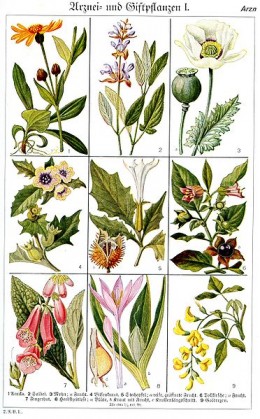Alternative Medicine Versus Conventional Medicine
 Even
as new overwhelming techniques continue to make the headlines, there is
another, popular health realization happening in homes all across the
country. While conventional medicine becomes more and more complicated
and more and more costly, there are a growing number of people turning
to the more natural ways of healing. The simple, traditional, decidedly
low-tech methods of preventing illnesses and solving everyday health
problems. These include natural herbal remedies.
Even
as new overwhelming techniques continue to make the headlines, there is
another, popular health realization happening in homes all across the
country. While conventional medicine becomes more and more complicated
and more and more costly, there are a growing number of people turning
to the more natural ways of healing. The simple, traditional, decidedly
low-tech methods of preventing illnesses and solving everyday health
problems. These include natural herbal remedies.Consider this, in 1997, America made an estimated 627 million visits to alternative health practitioners – this is more than people made to see primary care doctors. In 2009, Americans spent an estimated $34 billion on alternative medicine. These numbers have tripled over the last few years.
What is happening here? What have homeopaths and nutritionists, massage therapists and other alternative health care practitioners got to offer these people that boosts the most advanced technologies in the world? Why are these people flocking to health food stores and purchasing lotions, herbs, and other potions? What is it that keeps them going back again and again?
It is because many people are changing their way of thinking about there health. It is because at the same time this change is taking place they’re already realizing that conventional health care is becoming more and more expensive and less and less effective.
To some the term “alternative medicine” conjures up some strange notions. But actually the “alternative” way of medicine is not all that alternative. At one time this way the way of “mainstream medicine. In fact not so long ago today’s way of medicine was considered strange. There was a time when doctors were chastised for just washing their hands before seeing a patient. It wasn’t a requirement.
It wasn’t until the early 20th century, the “golden age” of medicine, that Americans developed the attitude that good health was found in the medicine cabinet.
But now people are beginning to see that this technology causes as many problems and it solves. For instance the wide spread use of antibiotics has given rise to bacteria that is almost completely resistant to most drugs.
Alternative medicine concentrates on the treating of the cause, not just the symptoms of an ailment. There was a time when herbs, and herbal remedies were only sold in health food stores. Today you can purchase them in just about any grocery or drug store around. There was a time when the doctor’s bag consisted of many of the herbal remedies we now as alternatives today. Now even some “main stream” physicians are turning to the alternative methods for help.
Patients and doctors alike are beginning to realize it is time to treat the whole person, not just the symptom. This is not to say that you should ignore modern medical techniques. Just be sure they are what you need before you except them.
When one looks at the overall world population, alternative medicine is not alternative at all, but actually the basis of health care.
Many of the most popular forms of alternative medicines include Reiki, Diet Therapy, Hydropathy, Herbalism, Reflexology, Magneto therapy, Shiatsu, Yoga, Acupuncture, Acupressure, Homeopathy, Naturopathy, Aromatherapy and Ayurvedic.
Today information about “alternatives” are plentiful. Use them, be informed and ask questions.